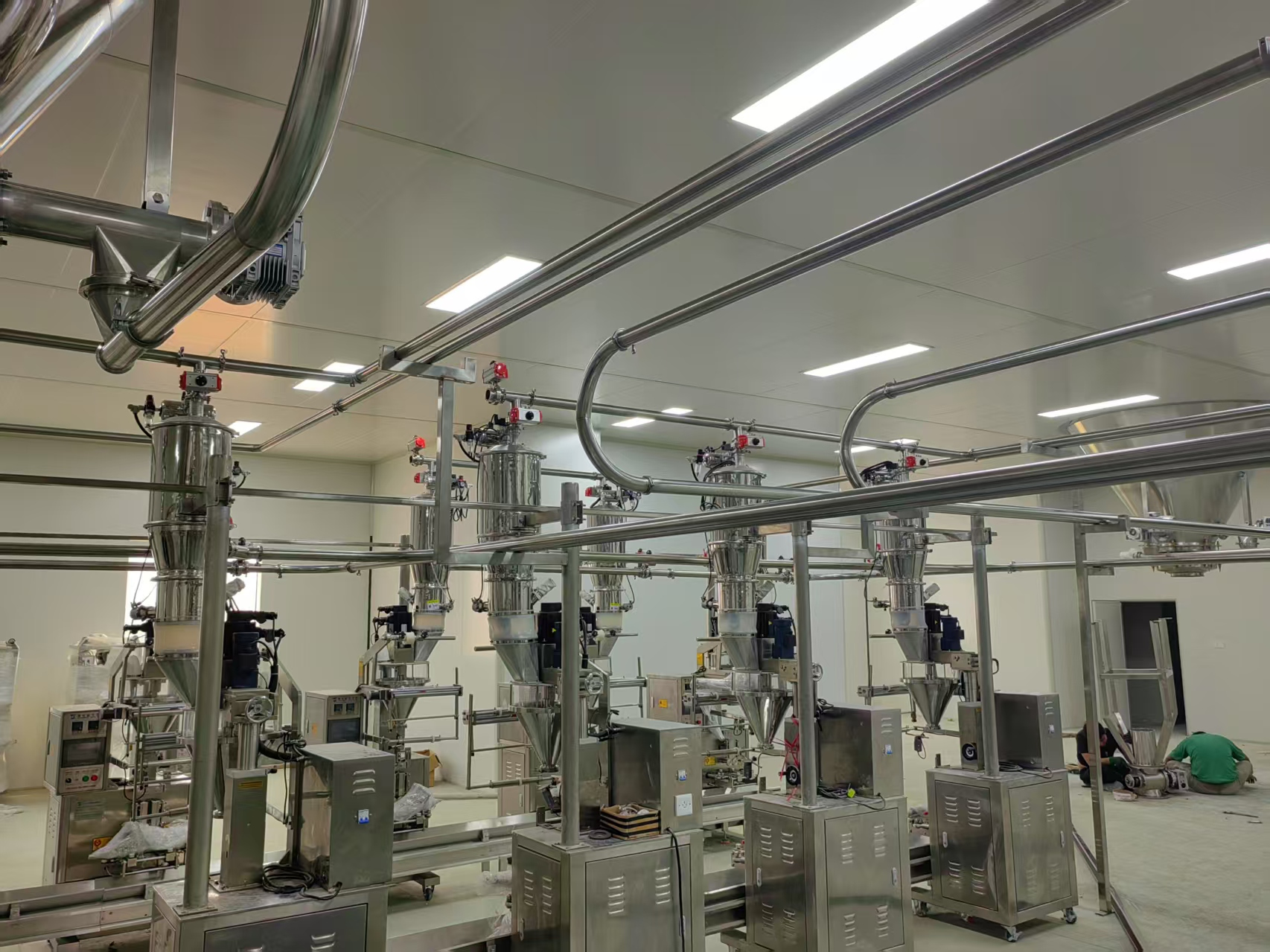The global surge in demand for plant-based beverages, particularly soy milk, necessitates highly efficient, hygienic, and automated production processes. Traditional manual or mechanical methods for handling soy powder and additives present significa...

The global surge in demand for plant-based beverages, particularly soy milk, necessitates highly efficient, hygienic, and automated production processes. Traditional manual or mechanical methods for handling soy powder and additives present significant challenges, including contamination risks, dust generation, and labor intensity. Vacuum conveying systems have emerged as the optimal solution, transforming material handling within modern soy milk factories.
Soy milk production involves precise handling of various dry ingredients:
1. The core ingredient, often cohesive and prone to dusting.
2. Essential fortifications, typically added in small, precise quantities.
3. Flowable but potentially dusty.
4. Often fine powders requiring gentle handling.
Manual scooping, pouring, or using screw conveyors led to:
Airborne dust, operator contact, and difficult cleaning increased contamination potential.
Dust generation meant product waste and messy work environments.
Difficulty in thoroughly cleaning mechanical systems between batches or different ingredients.
Physically demanding tasks and exposure to dust.
Manual methods lacked precision, impacting product quality.
Vacuum powder handling systems provide a closed, automated solution perfectly suited to soy milk production lines:
1. Ingredients travel within enclosed stainless steel tubes (typically 316L) and filters. This drastically reduces airborne dust, prevents operator contact, and protects the material from environmental contaminants.
2. Integrated high-efficiency filters (often HEPA-grade) capture nearly all dust at the source, improving air quality, worker safety (reducing explosion risks), and minimizing product loss.
3. Vacuum systems utilize low-velocity conveying, especially beneficial for delicate soy protein structures, minimizing degradation or denaturation.
4. Systems feature smooth surfaces, minimal dead zones, radiused corners, and are fully compatible with rigorous Clean-in-Place (CIP) and Sterilize-in-Place (SIP) protocols essential in food production. Quick-release clamps facilitate easy disassembly for inspection and cleaning.
5. Systems integrate seamlessly with PLCs and recipe management software. Ingredients are automatically conveyed from storage (silos, big bags, drums) directly to mix tanks or hoppers in precise, pre-programmed sequences and quantities.
6. Easily routes around existing equipment. Significantly faster than manual handling, reducing batch cycle times and labor costs. One system can often serve multiple supply and destination points.
A leading soy beverage manufacturer upgraded their main mixing line. A central vacuum conveying unit was installed:
Dedicated pick-up points for Soy Protein Isolate (FIBC discharger), Sugar (silo), and a minor ingredients station (Vitamins/Minerals/Stabilizers - from drums or small bins).
Sealed connection directly to the large, high-shear mixing tank.
Operators select the recipe on the HMI. The system automatically conveys each ingredient sequentially in the correct order and weight (verified by load cells on the receiving hopper/mixer) directly into the mixing vessel. Water addition is triggered automatically once powders are loaded.
Dramatic reduction in dust levels (>90%). Eliminated manual handling, minimizing contamination risks. Achieved consistent food safety audit compliance.
Consistent, precise ingredient dosing ensured uniform product quality and taste batch-to-batch. Gentle handling preserved protein functionality.
Powder transfer time reduced by 70%. Labor requirements for powder handling cut significantly.
Ingredient loss due to dust minimized. Reduced cleaning time and water/CIP chemical usage.
The automated system easily accommodated increased production volumes without adding labor.
Vacuum conveying technology is no longer a luxury but a critical component in modern, competitive soy milk production. By providing a closed, hygienic, automated, and efficient method for handling sensitive dry ingredients, it directly addresses the core challenges of the industry. The result is safer operations, superior product consistency, reduced waste, lower operating costs, and the ability to meet the growing demands of the plant-based beverage market effectively. Its integration represents a significant step towards fully optimized, next-generation food manufacturing.